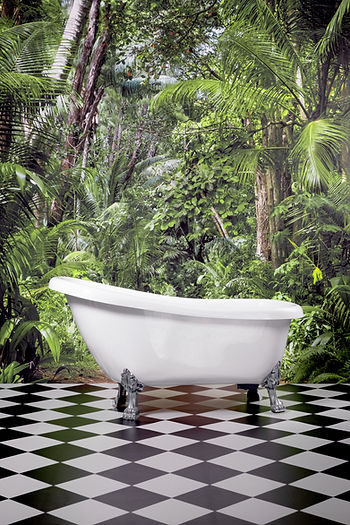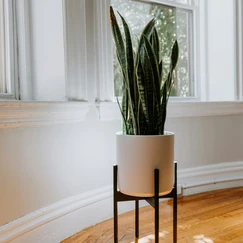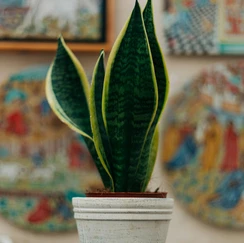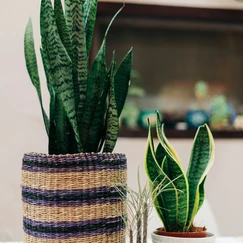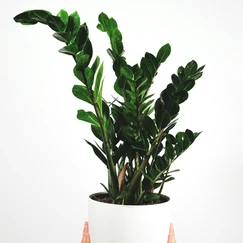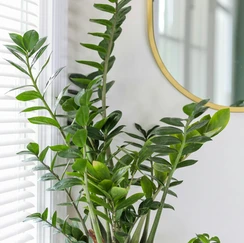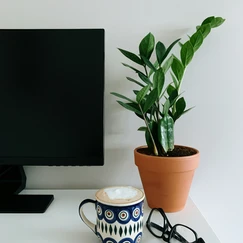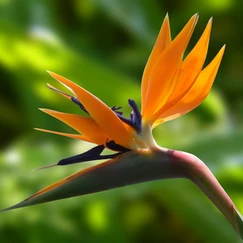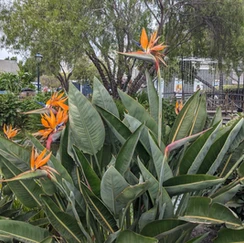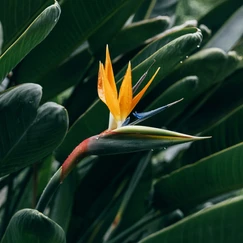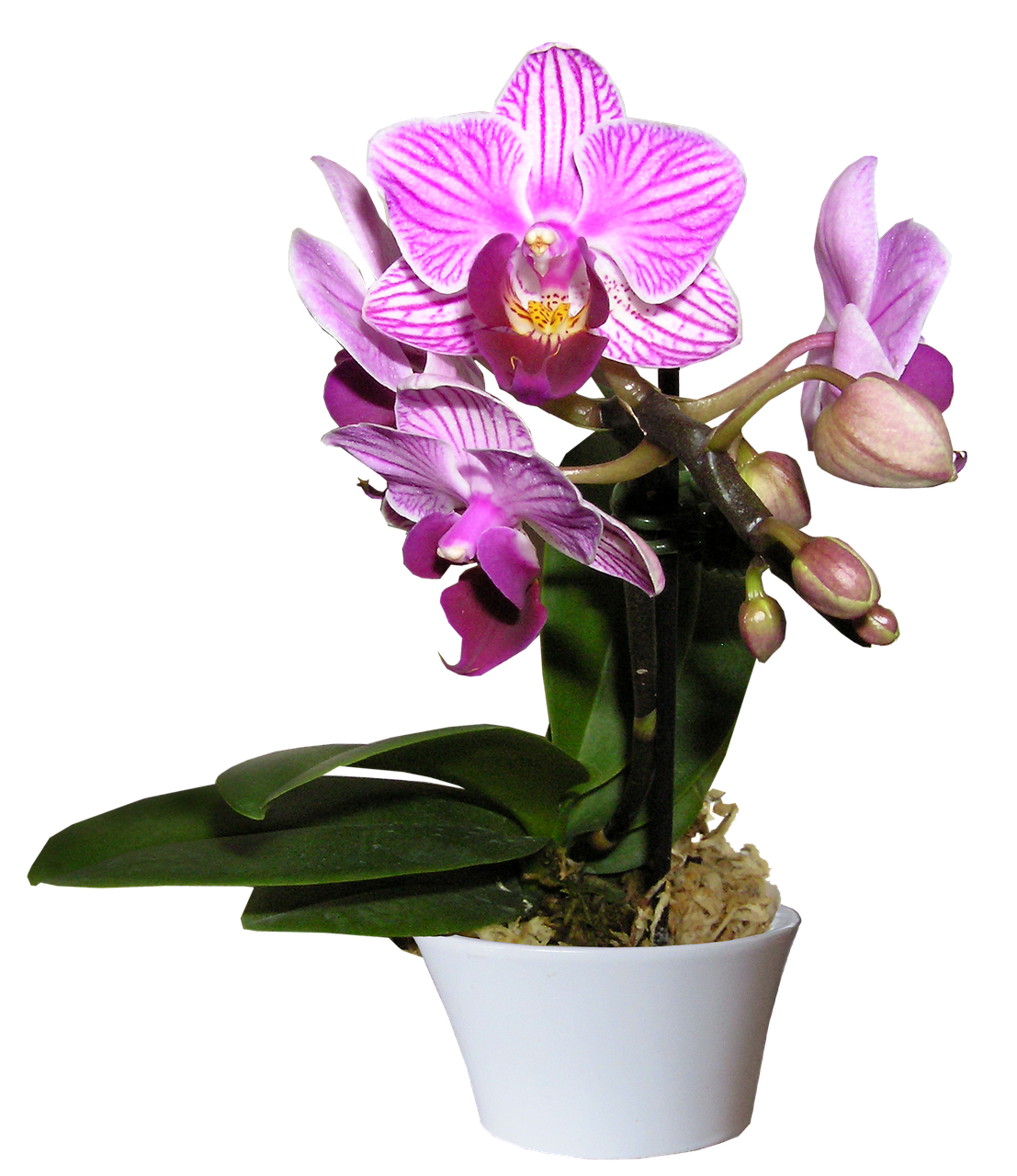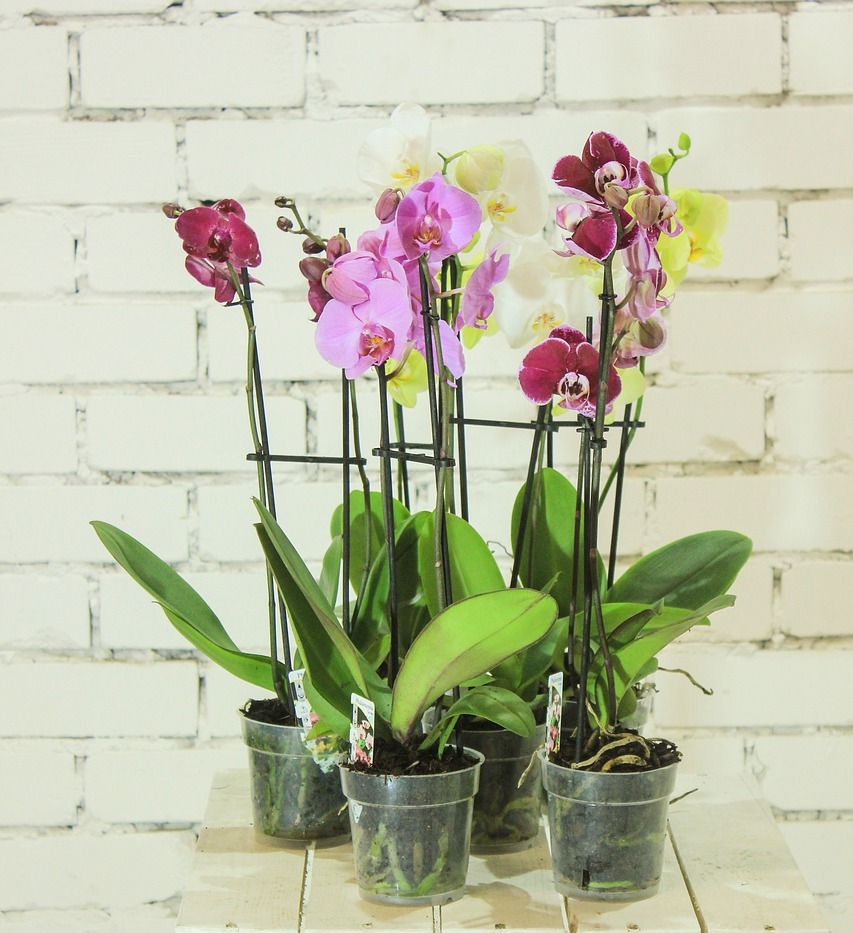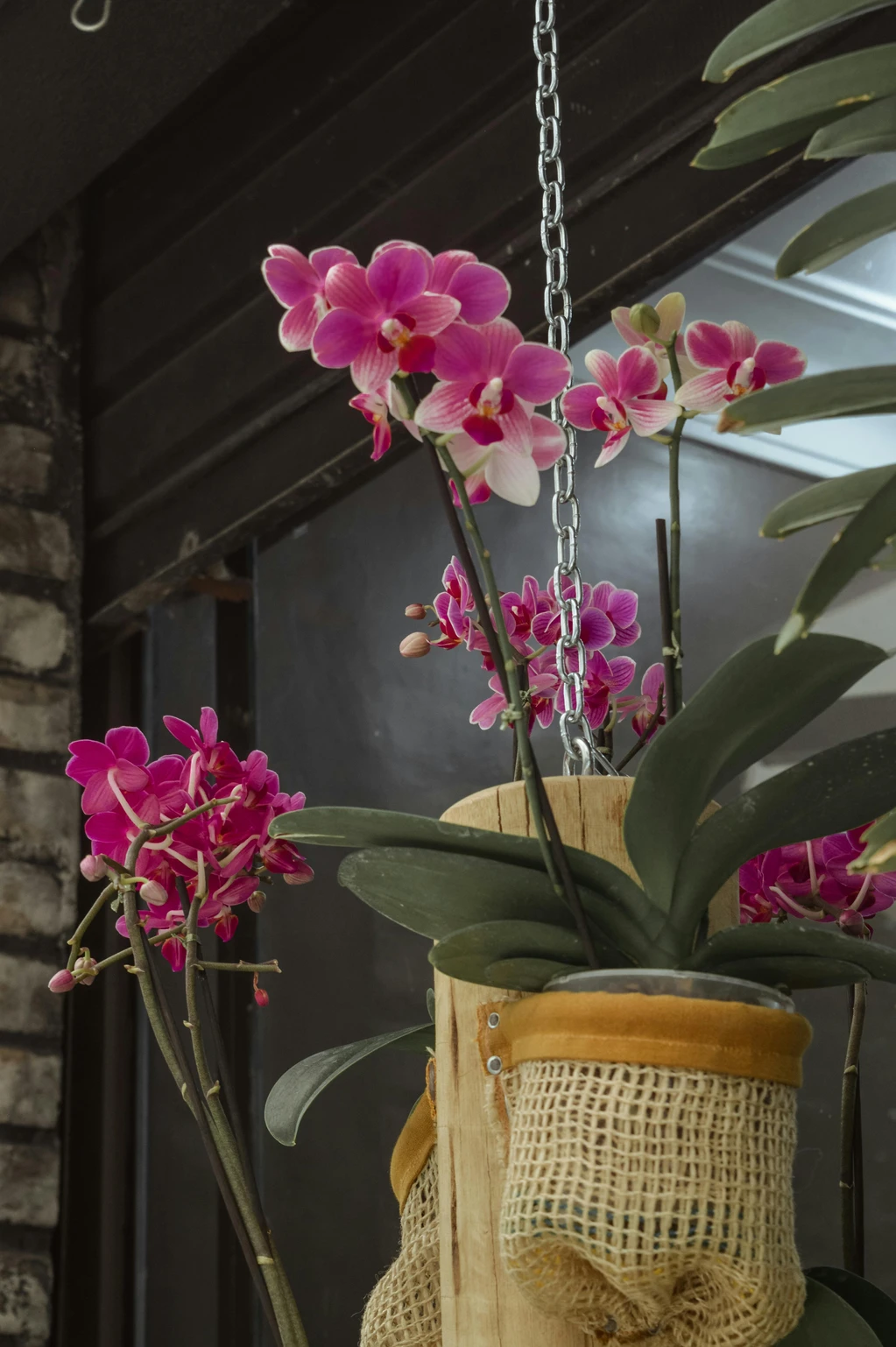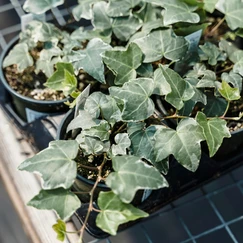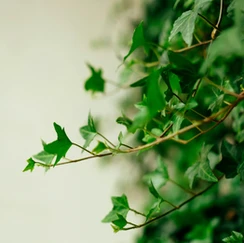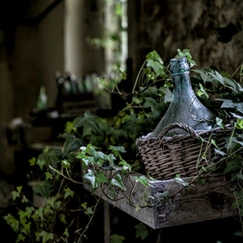Live indoor plants add beauty, peace, tranquility, and happiness to a home. It has been proven that having plants in the home increases your positive mood and reduces high blood pressure.
It’s easy to maintain plants in a sunroom or a south facing room. But what plants can you add to a home when its living space faces the north or one that doesn’t have much natural light?
If you are someone who lacks natural sunlight in their home, don’t fret. Nature provides us with many low light plants from which to choose. Below are 10 very easy to maintain, low light plants. Provide them with water and good soil as instructed and you’ll never have to worry about throwing out another plant due to a lack of sunshine.
These top 10 hard to kill indoor plants for low light environments almost always thrive, even for those who say they have no green thumb!
(Some of the links within this post are affiliate links on which I receive a small compensation from the sale of certain items with no extra cost to you.)
(As an Amazon Associate I earn from qualifying purchases.)
Ten Hard-to-Kill Indoor Plants For Low Light Environments
In addition to low light, these plants do not need a lot of water. Feel free to travel without worrying whether your plants will survive your absence.
Heart Leaf Philodendron
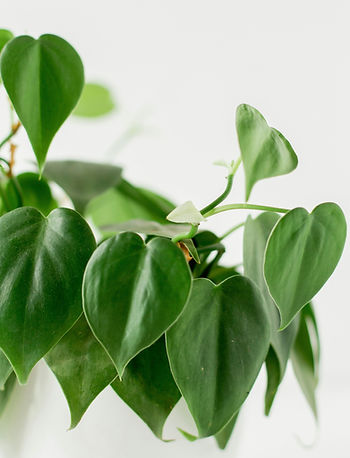
The Heart Leaf Philodendron is a beautiful addition to any home.
Light: Low or indirect light
Water: When soil is dry to the touch
Soil: An equal blend of potting soil, perlite or pumice, orchid bark or coconut coir
Fertilizer: Diluted fertilizer once or twice from spring through summer
Beware: Philodendrons have a toxicity level of mild to moderate for cats and dogs if ingested. Place up high away from pets and children.
Pothos
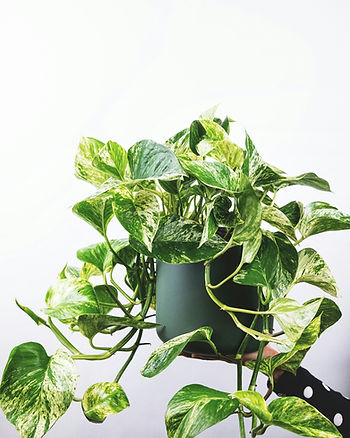
The Pothos is a charming variegated hanging plant.
Light: Bright, medium, or low indirect light
Soil: Ordinary well-draining potting soil on the dry side
Fertilizer: Once a month (not more) during spring and summer
Pothos are poisonous to animals and can cause severe gastrointestinal distress.
Snake Plant
This hardy houseplant has stiff leaves.
Light: Bright light to low light
Water: Every 2 weeks or longer if soil is not dry
Soil: Succulent cactus mix that allows water to flow through while preventing root rot
Fertilizer: Low light/one time per year: medium light/twice a year; bright light/every 3 months. DO NOT OVERFERTILIZER
Snake plants if ingested by pets can cause nausea, vomiting and diarrhea.
ZZ Plant
The ZZ Plant is one of the easiest plants to care for. It likes to be crammed into a pot so there is no need to frequently repot this plant. It does not like a lot of water.
Light: Medium to low light
Water: Can go months without watering. If the leaves and stems feel less plump, then water.
Soil: Well-drained soil. It’s rhizomes hold water much like cacti, retaining water in their leaves.
Fertilizer: Once every 6 months or when soil looks completely void of nutrients (dry and powdery)
ZZ plants if ingested by pets can cause discomfort. Also, they can cause skin irritation if touched. Handle with care.
Parlor Palm
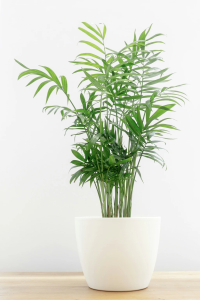
This easy to maintain indoor plant adds a tropical flair to your home.
Light: Bright, medium or low light
Water: Water thoroughly when soil feels dry
Soil: Half peat moss, half coarse sand or perlite
Fertilizer: Slow release fertilizer added to soil in the spring
Non-toxic to pets
Bird of Paradise
These beauties also add a tropical flair to your home. They are very easy to care for. New plants take 3 to 4 years before blooming. If you repot the plant, it will take another 2 to 3 years before it blooms, so leave it in its original pot for as long as you can.
Light: Bright light (I know this is not a low natural light plant, but it can add a bit of charm to your home in a brightly lit room)
Water: Allow soil to dry out between watering, approximately 1 to 2 weeks
Soil: Rich, loamy well draining soil
Fertilizer: Liquid fertilizer in water every other week during growing season
Bird of Paradise is mildly toxic to pets.
Cast Iron Plant
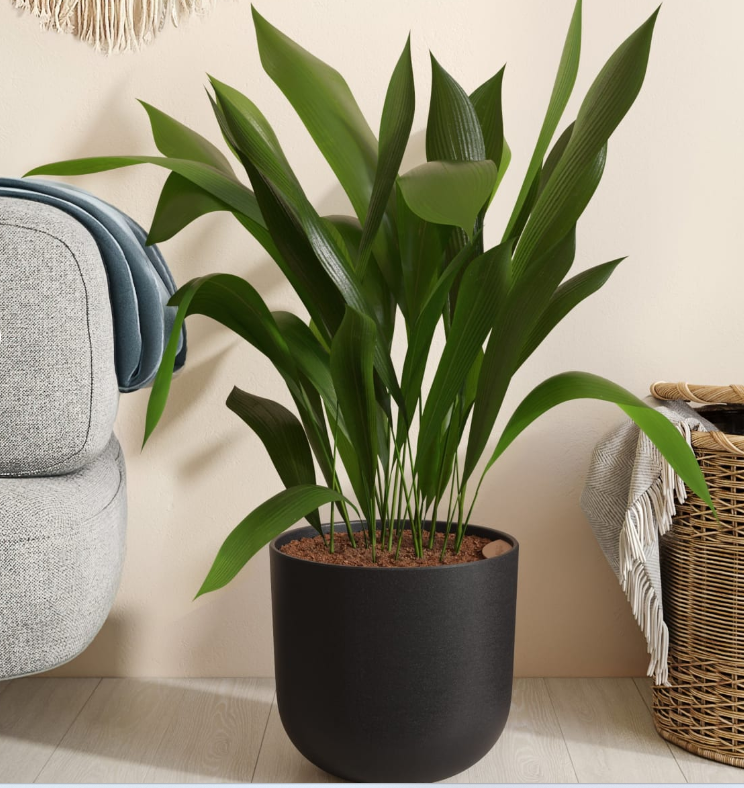
A cast iron plant, also known as Aspidistra elatior, is a very easy plant to grow. You can differentiate this plant from the peace lily by looking at the base of the stems. A cast iron plant has multiple stems coming up from the soil, whereas a peace lily has stems joining at the base.
Light: Will tolerate low light areas
Water: Let the first 2 inches of soil dry out before watering; do not let them sit in a saucer of water, which will create root rot
Soil: Any easy draining soil
Fertilizer: Liquid fertilizer in spring and summer following directions on container
A cast iron plant is safe for pets.
Ponytail Palm
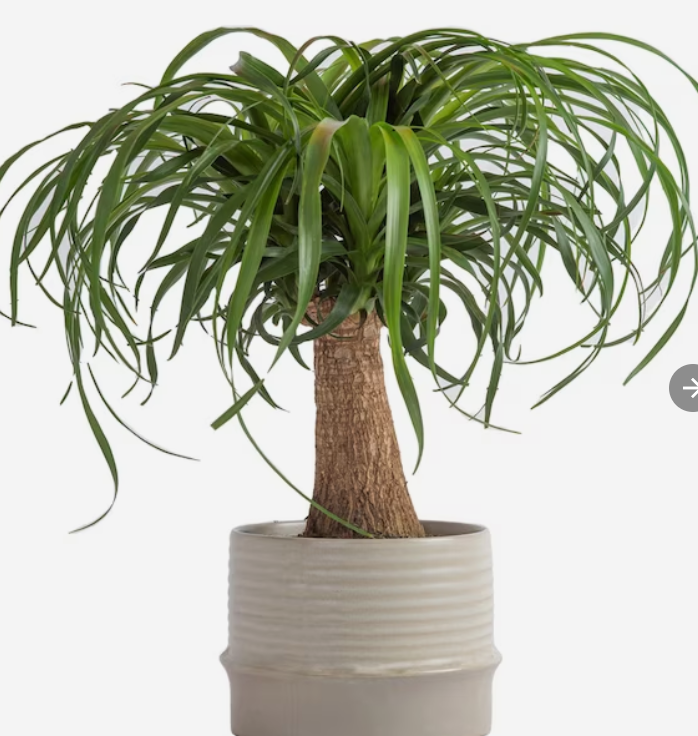
This funky looking palm is quite the conversation starter. It prefers a bright area but can tolerate moderate light. In a lower light setting the plant will grow more slowly. This plant is in the cactus family.
Light: Bright light to medium light. It can tolerate darker rooms in the winter but move to a brighter room in the spring.
Water: Infrequently, every 3 to 4 weeks
Soil: Well draining cactus soil
Fertilizer: Use cactus/succulent fertilizer in spring
A Ponytail Palm is nontoxic to animals.
Moth Orchid
Orchids are one of my favorite plants. Their blooms last from 2 to 6 months and they are quite easy to maintain. Mature plants bloom 2 to 3 times per year. A moth orchid is your typical orchid found in most grocery stores. They have dark, flat, wide leaves arranged opposite of each other on the stem.
Light: Bright to medium to indirect lighting; can even survive in lower light; direct sunlight will scorch leaves
Water: When pot becomes light in weight around once a week or so; Water it in a sink with a slow sprinkling for around 15 minutes to wet the medium. Let it drain for another 15 minutes.
Soil: Special orchid medium (looks similar to large pieces of bark mulch)
Fertilizer: Light fertilizing once or twice a growing season with orchid specific fertilizer
Moth Orchids are nontoxic to cats and dogs.
English Ivy
English Ivy has old world charm. It can be destructive if grown along a brick wall because its tendrils will dig into the mortar and create crevices where water can seep through. However, when in a pot hanging on a shelf, it adds a bit of whimsy to any room. It can be formed into a topiary if desired.
Light: Low, medium, or bright light
Water: Water when top 2 inches of soil are dry
Soil: Average, well-drained, loamy soil
Fertilizer: Liquid fertilizer every 4 to 6 weeks during spring and summer
English Ivy is toxic to animals.
Toxic to Pets
Many indoor and many outdoor plants are toxic to pets. However, most pets are smart animals. Their basic, natural instincts tell them which plants are and are not toxic to them. Most toxic plants emit an undesirable odor which deters most pets from chomping down on them. However, with that being said, you should still use caution when introducing an indoor plant to your home if you have pets.
The four plants that are most toxic to pets in this blog are the Heart Leaf Philodendron, English Ivy, Snake Plant, and English ivy.
The most deadly indoor plant is the Peace Lily. Even a small amount of licking off its pollen from their fur can cause kidney failure and even death.
According to VCA Animal Hospitals (Veterinary Centers of America), other plants that are toxic to pets include: (below is a direct quote from the hospital regarding plant toxicity)
-
Oleander. Also known as Nerium, oleander is more commonly found in outdoor gardens, but some gardeners bring them inside for the winter. These plants contain cardiac glycosides, which can cause drooling, diarrhea, abdominal pain, abnormal heart rhythm and neurologic signs.
-
Aloe. Both beautiful and functional, aloe is often used for its medicinal properties. But chewing on the plant can lead to vomiting, diarrhea and lethargy. While the inner gel is generally considered non-toxic and is often used on scrapes and burns, do not use it on your pet.
-
Chrysanthemum. These bright fall flowers contain several toxic components that can cause illness in pets if ingested, including vomiting and incoordination. Luckily, symptoms are often mild as long as your pet has only eaten a small amount of the plant.
-
Hyacinth. The toxins in this spring-blooming perennial are concentrated in the roots and bulbs. Chewing on the bulbs can cause severe vomiting and diarrhea, profuse drooling and burns to the mouth. Tulips also belong to the same plant family and can cause similar symptoms if the bulbs are ingested.
-
Jade plant. Common among succulent-lovers, the jade plant is also known as the money plant or lucky plant. Chewing on these succulents can lead to vomiting, depression and loss of balance. Not so lucky after all!
-
Sago palm. These leafy green ornamentals are highly toxic to pets! They contain cycasin, a toxin that causes severe liver failure within a few days of ingestion. All parts of the plant are toxic and ingestion can be fatal if not treated immediately. 7.
-
Daffodil. These beautiful yellow and white flowers are a herald of spring. But ingestion of any part of the plant can trigger severe vomiting, diarrhea, abdominal pain, convulsions and abnormal heart rhythm.
-
Asparagus fern. Also known as the foxtail fern or emerald fern, these plants are often used in hanging pots due to their feathery leaves and hardy nature. But it can cause skin irritation if your pet brushes against it. Eating the berries can also cause vomiting, abdominal pain and diarrhea.
For more information on toxic plants and pets, visit the ASPCA site.
Top 10 Indoor Plants for Low Light Environment
As you can see there are many low light plants to choose from if your home does not have much natural light. Adding any indoor plant to your home is an easy way to decorate. You will be amongst the many trendsetters who enjoy bring the outside in.
Follow these simple guidelines for maintenance of your plants and you will be blessed with all the benefits of caring for plant babies!
I hope you enjoyed this blog. Please share it with friends and family and be sure to comment below. I’d love to hear from you!
Happy Gardening,
Nina

